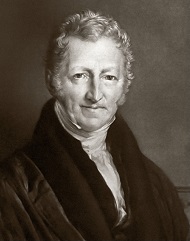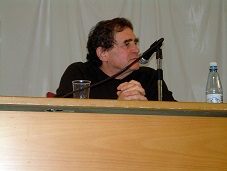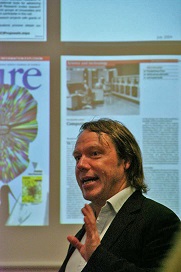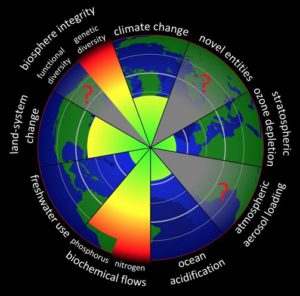‘Education is the most powerful weapon which you can use to change the world’ (Nelson Mandela).
Hans Tramper is professor emeritus in Bioprocess Technology at Wageningen University and reflects on the development of his subject in a series of essays. His pieces were published so far on 18 June, 30 June, 11 July, 22 July, 19 August , 10 September and 21 September 2018.

Chance does not exist
Chance does not exist, or does it? Is it accidental that life has originated on Mother Earth, or has this been designed by a supreme power? Whatever the answer, the question remains what conditions were required for life to originate at all on earth? Or, where did chemistry turn into living matter? And what was the first ‘object’ living, and able to reproduce itself, for that is what life is all about? How do I spread as much as possible my own DNA, and how do I contribute as well as I can to the propagation of my species? Is that by just concerning oneself by one’s own species? Questions only posed by mankind, as far as we know. Questions that I started posing myself consciously when I studied chemical technology in Delft, end sixties. Questions that steered me towards biology ever more.
From the angle of good stewardship we should devote ourselves much more to finding answers to these questions. In particular the question which species are of crucial importance to a good life and a healthy environment. A ‘satisfactory’ biodiversity is the first prerequisite for maintaining our own species, but then, what amount of biodiversity is satisfactory? It is a fact[i] that since 1800 the extinction of species drastically speeds up, owing primarily to the strong increase of land cultivated by mankind for agricultural purposes. In 1980, there were four billion people, and ever since, each decade adds one billion (see table). The million-dollar question here is: how many people can the Earth sustainably accommodate? This is also the no.1 question in the Dutch National Science Agenda.
Table Global human population
200.000 b.C. 0
10.000 b.C. 1 million
1800 1 billion
1930 2 billion
1960 3 billion
1980 4 billion
1990 5 billion
2000 6 billion
2010 7 billion

Limits to balanced growth
At present, the earth is being heated up by more than seven billion people. We already exceeded the limits to balanced growth. If we should continue along this path, then according to the old Malthusian view, now out of date but still often quoted, we will run into planetary limits and live through a catastrophe that will drastically reduce overpopulation through disasters like famine, pandemics and wars. A very readable article by Arnold Heumakers on Thomas Robert Malthus (1766-1834), a British minister, demographer and influential economist, appeared on July 31, 2010 in the Dutch newspaper NRC, headed: Malthus’s doomsday scenario. In his Essay on the Principle of Population (1798), Malthus predicted the aforementioned disasters and other misery, because growth of food production would never be able to keep pace with population growth. Increasing food production would hardly be a solution, he feared, for that could even lead to enhanced population growth. What bothered him in particular, and I share that thought, was the uncritical optimism of contemporaries like Condorcet and Godwin, who projected an almost infinite growth of life expectancy. Malthus judges that they chased illusions: they disregarded what in his essay he calls ‘the population principle’. In a few words, according to Malthus, population will always grow faster than resources can possibly supply. However, he did not foresee the very fast technological advances that resulted in industrial and green revolutions. Of course, there are limits to what our planet can supply sustainably. The question is: when will we transgress these limits?
‘Piles of waste growing endlessly, depleted oceans, tropical rainforest logged down, plundered resources, climate change. They would not exist, if mankind had not been in such large numbers.’ This was the opening statement of an article by Paul Luttikhuis in the NRC, 28 December 2013, headed How much can the earth accommodate? It is above all a reflection of the book Countdown: Our Last, Best Hope for a Future on Earth? by Alan Weisman, former journalist of the Los Angeles Times. He looks upon himself as a Malthusian, but even more as an Ehrlichian. Paul and Anne Ehrlich believed that there is an optimum population, related to technological development. In their book The Population Bomb (1968), they predicted that within ten years hundreds of millions would die from hunger. In 1994 – there are 5.5 billion people then – they say that in an ideal situation, the earth can accommodate between 1.5 and 2 billion people to the maximum, in other words we should no longer grow but contract. In 1974, UN secretary general U Thant mentioned as the major threat to the world ‘the race between the pace of population growth and the insufficient resources required to let mankind live in peace, wealth and dignity’. The ideas of Alan Weisman, forty years later, fit seamlessly into these thoughts: how many people can the earth accommodate, on the assumption that each of us is entitled to a life more or less agreeable? Is this really our ‘last opportunity for a future on earth’?

Improvement of the human condition, remedy against population growth
According to Weisman, the big question is how we can slow down population growth. How do we achieve that women will not get more than 2.4 children – rather somewhat less in order to decrease world population? The answer, so Weisman concludes, comes from the women themselves. Give them right of self-determination, make sure that they can emancipate, and combine this with readily available (preferably free) contraceptives. Weisman argues that this strategy works by pointing at the example of Iran. During the war with Iraq, women were urged to get as many children as possible, in order to contribute to an ‘army of twenty million men’. But in 1988, Iran radically changed its population policy: ‘One child is fine, two is enough’ was the slogan of the new program, that was not characterized by coercion, otherwise than China’s one-child-policy. The foundation was education for women and girls. In 1975, almost 75% of Iranian women were illiterate, Weisman writes, but in 2012 60 percent of the students at Iranian universities were female. In Asia too, particularly in India and the South-Eastern countries, we witness a stabilization of the population through increased wealth. But with this, the consumption drive, the hunger for ever more, also grows.
The direct relationship between better living conditions and population growth is well-known, and education, female emancipation and the availability of contraceptives play an essential role in this. But we should ask how many women have access to information, education, and contraceptives in developing countries, particularly in Africa, where population growth is fastest, for a number of political, religious and cultural reasons. The United Nations expect that our earth will number around 8.5 billion people by 2030, Africa being the fastest growing continent. By 2100 it may be more than 11 billion. According to Alle Bruggink the earth can accommodate 10 billion, if we move over to precision technology. Together with Diederik van der Hoeven he argues this in the book More with Less, Welcome to the Precision Economy (2017). Gene technology, in particular CRISPR/Cas technology, fits this exactly, to my mind; using this technology, we can change DNA with great precision. In his last book Factfulness, posthumously published, the Swede Hans Rosling (1948-2017) explains why the world fares better than most of us think. On basis of UN data he concludes that global population will probably stabilize by 2075 at a ‘mere’ 11 billion.

Ten billion?
The Englishman Stephen Emmott is much more pessimistic in his book Ten Billion. From UN figures he makes completely different calculations. He judges that by the end of the century, in many African countries population will have grown by hundreds of percent if present growth rates do not slow down. Even US population will then grow by fifty percent. We will grow far beyond the 10 billion mark. He even mentions the number of 28 billion and writes: ‘From whatever side you view it, a planet that hosts 10 billion people is a nightmare. And what is even more worrying, there is compelling evidence by now that entire worldwide ecosystems will not merely suffer from a catastrophic collapse, but that they are quite near such a collapse already. What are our options, really? I can envisage two. The first option is to save ourselves from catastrophy by technology. The second one is a radical change in our behaviour.’ Who of these forecasters is right? I myself believe in technological innovations and still in human reason, in our willingness to change. But the question remains: have we already crossed points of no return? And what can we, even should we do? With this in mind, the site Scientias.nl published an interview with Wim de Haas on April 28, 2018, titled ‘How many people can the earth accommodate?’ He is an environmental researcher at Wageningen UR and says: ‘Talking about limits to global population growth, we should also take into account aspects in the domain of the natural and social sciences… do we succeed in organizing our society in such a way that we change our consumption patterns and are able to use new techniques an optimal way?’ He then refers to two much discussed articles.

Planetary boundaries
In 2009, a very interesting article on ‘planetary boundaries’ (PBs) was published. This describes nine scientific limits concerning quality of life on our planet. It has been written by 29 top researchers with Johan Rockström as the first author[ii]. Two of his fellow authors are Dutch: Nobel Prize winner Paul Crutzen, meteorologist and specialized in atmospheric chemistry, and Spinoza Prize winner Marten Scheffer, professor in Aquatic Ecology and Water Quality Management at Wageningen UR, who researches step change changes in complex systems like the climate, society and lakes. In 2015, Will Steffen, the second author, publishes an updated and enlarged version with 17 co-authors[iii]. The open-access structured summary begins with: ‘There is an urgent need for a new paradigm that integrates the continued development of human societies and the maintenance of the Earth system (ES) in a resilient and accommodating state. The planetary boundary (PB) framework contributes to such a paradigm by providing a science-based analysis of the risk that human perturbations will destabilize the ES at the planetary scale.’
We can find the summarizing image through Wikimedia Commons. The PBs are indicated by the innermost grey circle (normalized). They have been calculated by linking scientific knowledge of the earth’s system to the precautionary principle. If disturbances due to human activities remain within this circle, i.e. in the green area, the risk of destabilizing the ES is low, and we find ourselves in the safe operating space of global social development. If we transgress the scientific parameter(s), for instance atmospheric CO2 concentration in the case of climate change, then we enter into the uncertain zone, the intermediate yellow area, with an increasing risk of destabilizing the ES. This holds for climate change, as shown. Therefore, we urgently need to apply measures to reduce emissions of CO2 and other greenhouse gases. Precisely in this area, I see good prospects for gene technology. Animal husbandry causes a lot of greenhouse emissions like CH4. In particular cows belch a lot of CH4. Cultured meat – I also envisage growing insect cells in bioreactors for that purpose – would constitute an attractive source of proteins. That just releases CO2 that can be captured efficiently and used for growing special, genetically modified algae that can be used as feed for the breeding reactors. Gene technology should also be capable of producing cultured meat with an optimal protein composition. In a later essay, I will treat this in more detail.
Transition urgently required
Biosphere integrity and climate change are looked upon as core PBs, as they are of fundamental importance for the ES. ‘The climate system is a manifestation of the amount, distribution, and net balance of energy at Earth’s surface; the biosphere regulates material and energy flows in the ES and increases its resilience to abrupt and gradual change.’ If we transgress the values represented by the outermost grey circle, we enter into the red area, with an increased risk that the ES changes so much that living conditions for humans, and for life in general, become unbearable. The thin grey circle in the middle represents turning points. Near such turning points, some PBs show sudden changes. The grey shaded areas (red question marks) indicate that we don’t have enough knowledge to know where limits are. The figure shows clearly that several PBs are transgressed appreciably, and that some areas are even dangerously red. In my mind, that implies that we already are in a situation in which a transition is urgently needed in order to safeguard good and sustainable living conditions for mankind. The PB frame does not dictate how society should do this, the authors make clear that these are political decisions. The million-dollar question is: do we and do our representatives, in particular in the traditionally rich Western countries, dare to set aside personal wealth and power in order to facilitate a sustainable life for the whole of mankind on earth? One certain thing: we do not come short in knowledge and ideas on what to do.
In short, a prediction of the number of people that the earth can accommodate is impossible for the time being; we can even wonder if we should wish to make such a prediction. Our common goal should be to develop smart technology, and to make changes in our consumption pattern in such a way that each new-born child is welcome, and can rely on a life in wellbeing.
[i] S. Pimm and P. Raven, Biodiversity by number, Nature, 403, 853-858 (2000); A. Barnosky et al., Has the Earth’s sixth mass extinction already arrived?, Nature, 471, 51-57 (2011)
[ii] J. Rockström et al., A safe operating space for humanity, Nature, 461, 472-475 (2009)
[iii] W. Steffen et al., Planetary boundaries: Guiding human development on a changing planet, Science, 347, Issue 6223, 736 (13 February 2015)
